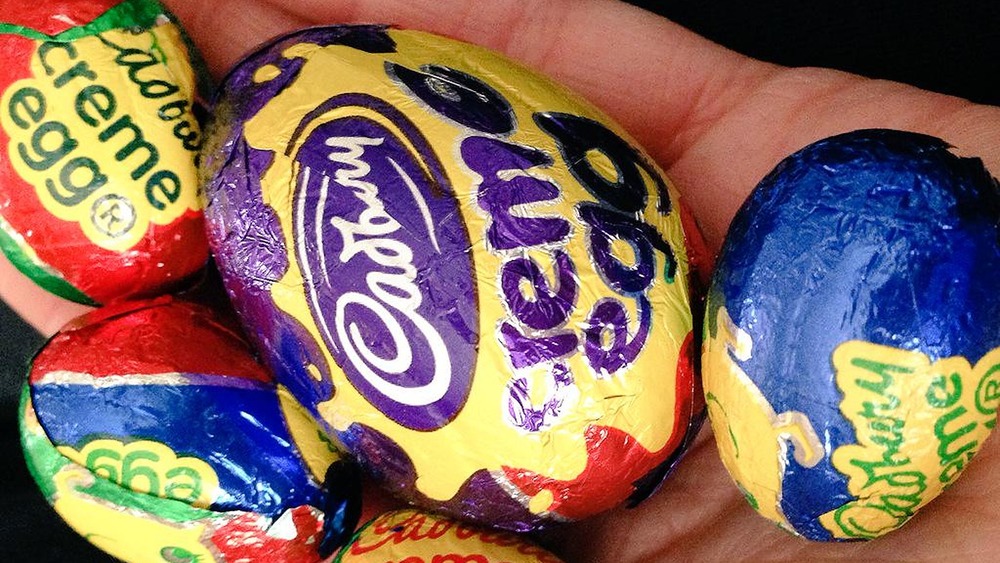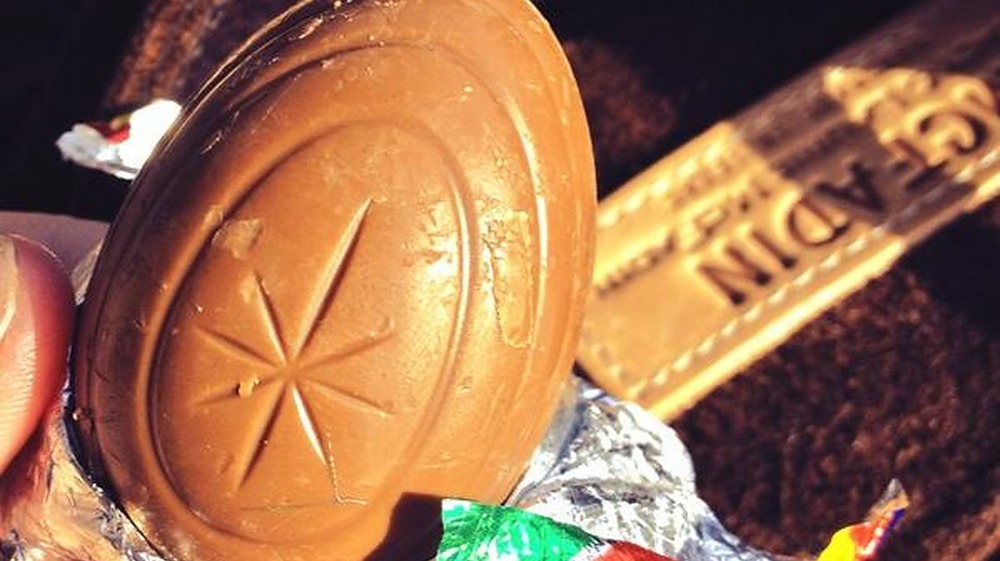This Is How Cadbury Creme Eggs Are Really Made
Cadbury Creme Eggs are one of the best Easter treats you can get. Unlike chocolate bunnies, which can sometimes have a disappointingly hollow center or are made with cheap, waxy chocolate, every Cadbury Creme Egg has a deliciously gooey, sweet filling encased in melt-in-your-mouth milk chocolate. Even if you buy these one-of-a-kind candies every spring (or go as far as to hoard the chocolate eggs to get you through the rest of the year), you might not really know all that much about them — or how they're made to look just like an egg white and yolk when you bite into them.
First, let's talk about the filling: Cadbury Creme Eggs have super sweet centers that ooze from their chocolate shells, but it's not super clear exactly what they're made of judging by looks alone. According to HuffPost, the filling inside each egg is actually fondant that's been heated until it forms the signature white creme. Fondant is made with three basic ingredients — granulated sugar, corn syrup, and water — so the filling inside a Cadbury Creme Egg is essentially just liquid sugar. The gooey fondant is then dyed with food coloring to make it look like the egg white and yolk found inside a real egg.
How are Cadbury Creme Eggs made?
So how does the filling get inside the Cadbury Creme egg, and how does it always come out looking just like the inside of a real one? According to Delish, the process starts with two separate chocolate molds for each half of the eggshell. Each side gets filled with gooey fondant, but only one half gets a dot of yellow to create the center yolk. Then, the two halves are pressed and sealed together to create the signature chocolate egg with creamy filling.
Interestingly, according to Mirror, the chocolate is still melted when the fondant is added to the center. However, since the fondant is denser than the melted chocolate, it sits on top without mixing into the molten shell. According to Business Insider, the two separate halves are brought together before the chocolate has hardened completely, which fuses them together. Then, the Cadbury Creme Egg cools as a whole, which might be why each one looks so seamless when unwrapped. After cooling, the eggs are finally wrapped in foil and packaged to be sold.
As Business Insider reports, Cadbury has been making Creme Eggs since 1971, and over 300 million hit shelves every year, so it's no wonder they've perfected the process. Now when they start popping up in January (they're only sold from the beginning of the year through April), you can bite into your egg knowing exactly how it was made.

